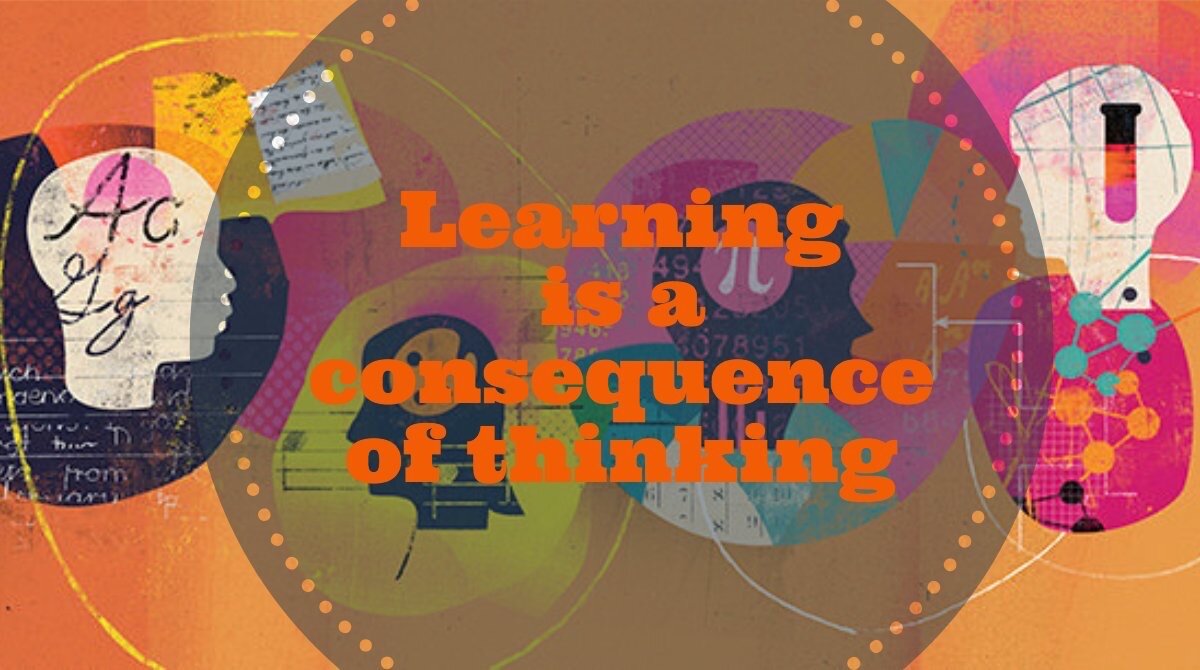Ten reasons to teach thinking
The teaching of thinking is a critical endeavour for teachers and one that brings enhanced learning opportunities for students. Unfortunately thinking is not something that we naturally do well and as a consequence it is a skill we need to learn. Understanding this is the first step towards establishing a culture of thinking in your classroom but encouraging an entire school to get on board with this can be difficult and given our already crowded curriculum anything that seems to add to the load is likely to be resisted. Here then are ten arguments to use with colleagues, parents and most importantly students that might help you convince them of the need to learn how to think. - Read More
The Power of Making Thinking Visible with Ron Ritchhart & Mark Church
On Saturday PZ Sydney Network hosted Ron Ritchhart and Mark Church for a conversation about their new book, “The Power of Making Thinking Visible”. What follows is a summary of some of the key messages from this conversation. You can watch the whole conversation above. For more learning opportunities like this visit the PZ Sydney Network or follow @pzsydnetwork on Twitter. - Read More and Watch the Video
Essential Reading for Teachers Interested in Thinking
If you are interested in building a classroom culture where thinking is noticed, named and celebrated, there are three books which make essential reading. They provide clear evidence for why teachers should focus their efforts on encouraging and normalising thinking and offer research-backed strategies to support this. The books are the result of ongoing research by Harvard’s Project Zero and their lead author Ron Ritchhart. - Read More
Starting a journey towards a culture of thinking
One of the BIG hurdles for teachers wishing to move towards a culture of thinking is the mindset of our students. It is common for students to come to their learning with the belief that school is about memorising information and reciting correct answers. Having to think, reason, make connections and consider different perspectives is for many new and challenging. Some students will want to be told what they need to know. For students who have only experienced a teaching and learning process that emphasises the transfer of knowledge from teacher to learner, being asked to think can feel like being abandoned and left to one’s own resources. They will see it as the role of the teacher to do the thinking, organise the content and explain the connections between ideas. Changing this mindset is the first step. - Read More
Thinking in the Wild - Thinking routines beyond the classroom
One of the highlights of attending the International Conference on Thinking (ICOT) was the opportunity to collaborate with group of teachers in the 'Curriculum Kitchen' workshop presented by Ewan McIntosh and Kynan Robinson of NoTosh. I should have known what to expect. Any conversation with Ewan is likely to make you stop and think. NoTosh celebrates questions and is not afraid to ask the sort of difficult questions you would rather turn a blind-eye to. In this instance the post workshop evaluation left participants at this conference with one mightily significant question. - Read More
The Eight Cultural Forces - The lens & the lever
Schools are busy and complex places. Whenever you bring several hundred people together for an extended period of time on a regular basis complexity is likely to thrive. One way to consider the complexity involved in the average school might be to map the connections and interactions which exist. Start the process with one person, consider all of the factors and experiences which make this person who they are. Now connect this person to one other and make note of the interactions which occur between these two people. Be certain to consider all of the factors and experiences relevant to this second person. Repeat this process again and again and again until you have mapped the interactions and intersections of everyone directly involved in the school. Then keep going, you need to consider all of the people on the periphery of the school and so far we have only considered the people; don’t forget the environment of the school and its community, the culture of the place, its history, its place in the world. Now that you are almost finished, go back and start the whole process again, things have changed since you started. - We need a better way and using the 8 Cultural Forces as a Lens and a Lever can help. - Read More
Image courtesy of Ron Ritchhart - https://www.ronritchhart.com/
Thinking Routines Tool from Project Zero
This tool highlights Thinking Routines developed across a number of research projects at PZ. While Project Zero did not originate the idea of a thinking routine, a vast array of its work has explored the development of thinking, the concept of thinking dispositions, and the many ways routines can be used to support student learning and thinking across age groups, disciplines, ideals, competencies, and student populations. In addition to the initial Visible Thinking research initiative, some of the larger PZ research projects focused on enhancing thinking include Artful Thinking, Cultures of Thinking, Agency by Design, and PZ Connect. - Visit Now
Seven Language Moves for Learning
Language unsurprisingly is a powerful force in education. As Ron Ritchhart notes in ‘Creating Cultures of Thinking’, language “is at once ubiquitous, surrounding us constantly, yet we hardly take notice of its subtleties and power.” If we wish to maximise the impact we have, if we hope to achieve particular goals, and if we wish to shape the culture of our classrooms, we must consider the role that language plays. - Learn More


